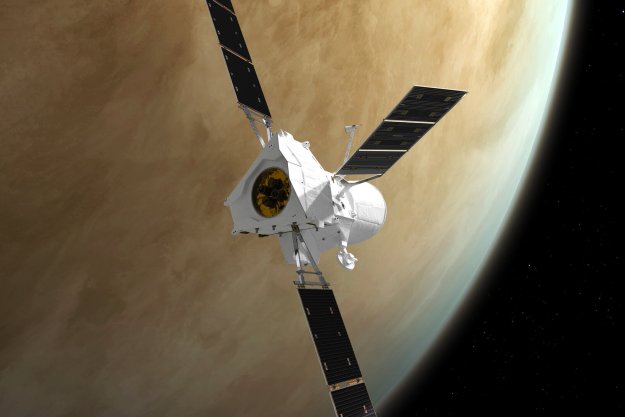NASA wants to send a mission to Venus. Proposed to launch in 2026, the Venus Emissivity, Radio Science, InSAR, Topography & Spectroscopy, or VERITAS mission, aims to investigate how Earth and Venus, which started off very similar, evolved to be so very different today.
“Venus is like this cosmic gift of an accident,” Suzanne Smrekar, principal investigator of VERITAS at NASA’s Jet Propulsion Laboratory (JPL) explained in a statement. “You have these two planetary bodies — Earth and Venus — that started out nearly the same but have gone down two completely different evolutionary paths, but we don’t know why.”

To learn about how the two planets diverged, VERITAS would gather data on the geology of Venus, looking at how its tectonic plates move over the planet’s mantle. It would also capture topographic maps of the surface to show features such as faults and plateaus, which could give scientists data about how Earth’s equivalent continents formed.
Another big topic of study for the mission is Venus’s abundant volcanic activity. “Determining whether Venus is actively undergoing volcanic activity and understanding what process is driving it is one of the really exciting questions I’d love to see answered,” VERITAS team members Jennifer Whitten said in the statement.
The craft would investigate volcanic activity using a spectrometer to identify rocks that were formed recently from magma coming up from beneath the crust. Analyzing these recently formed rocks would allow scientists to see more about the chemical processes going on under the planet’s surface without having their results affected by the time the rocks spent sitting exposed.

One big open question about Venus is whether it still has large quantities of water in its interior. “To unwrap the mysteries of Venus we have to look under the hood at Venus’ interior; it is the engine for global geologic and atmospheric evolution,” Smrekar said. “Are Venus and Earth fundamentally unique worlds? Or are the differences between these ‘twins’ only cosmetic? Answering this question is key to understanding what makes other rocky planets habitable and, ultimately, emerge with life.”
The VERITAS mission is part of NASA’s Discovery Program which invites proposals for innovative ways to investigate objects in our solar system, including planets like Venus. NASA will make a decision on which of the proposed Discovery missions will be fully funded in 2021.
Editors' Recommendations
- Help NASA in its quest to learn more about our sun
- Watch NASA’s capsule with asteroid samples hurtling to Earth
- Inside the crazy plan to scoop up and bring home a bit of the Venus atmosphere
- The art and science of aerobraking: The key to exploring Venus
- An old NASA spacecraft will crash to Earth on Wednesday




